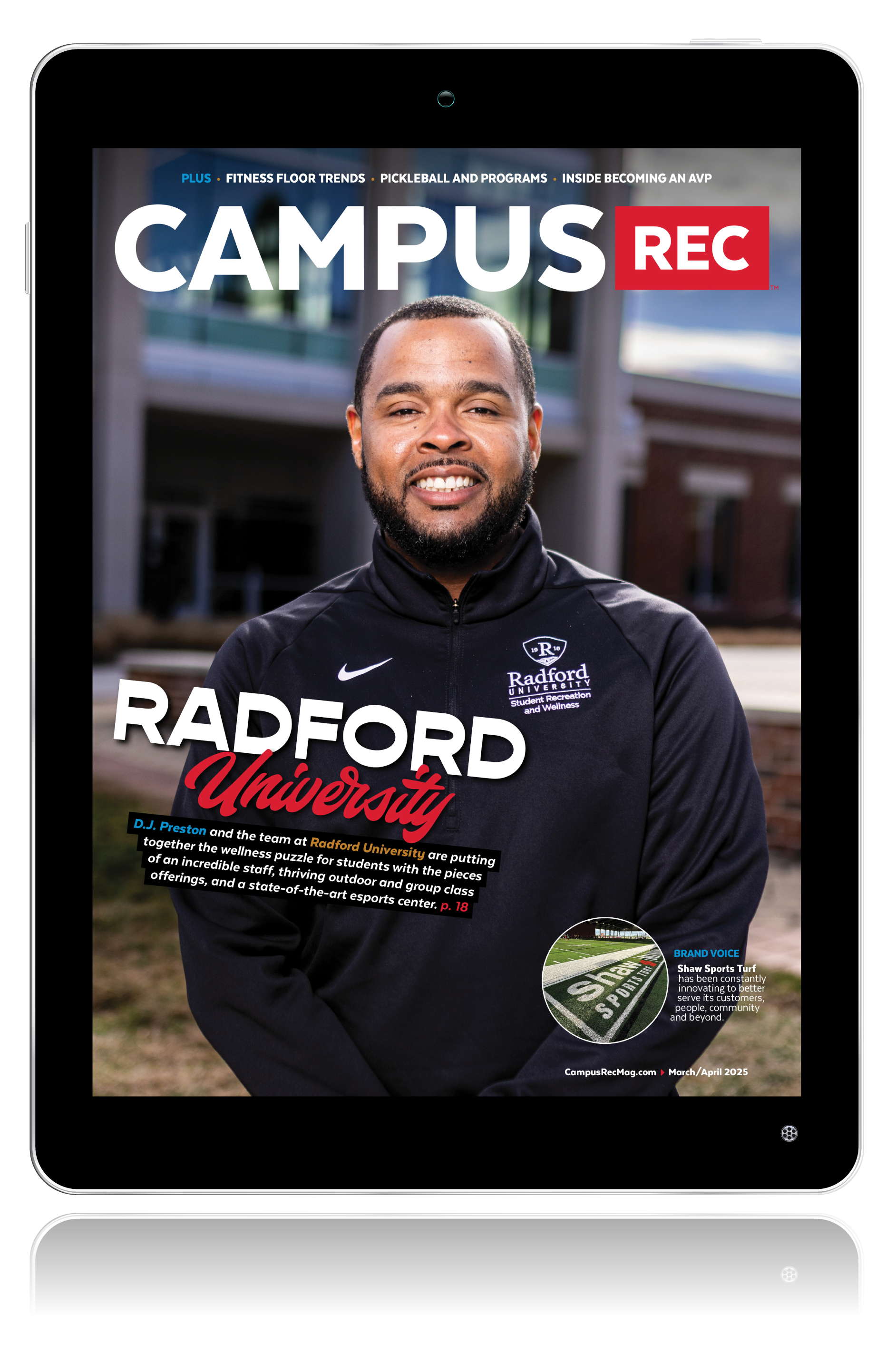In the May/June 2021 issue, David Jachimowicz, the recreation manager for the Campus Recreation department at Millersville University and a Computer Science major in the class of 2022, shares on spearheading the intramural esports program.
Can you share about your intramural esports program?
DJ: We initially focused on sports games, building a participant base from our existing physical intramural participants. Now, however, we have begun to expand into other genres and games, including:
- Counter-Strike: Global Offensive
- League of Legends
- Super Smash Bros.
Our leagues often follow a similar format as our physical intramural leagues, beginning with a two to three week season and then entering a playoff after that.
What are the top three lessons you’ve learned since starting it?
DJ: The biggest lesson, at least initially, was being able to accept lower numbers than we might have anticipated for the program. We had a somewhat grandiose idea of how this program could start and get off the ground. That needs to be built toward. It won’t just appear straight away.
Secondly, we’ve needed to learn how to reach the participant base of the program. Our participants are often those who have never interacted with intramurals before and have been under the belief our programs are not things they will be interested in. Finding a way to target and attract that group has been one of our biggest hurdles.
EXTRA CREDIT: Esports answers on sponsorships, building a diverse participant population and more.
Along the same vein as the previous lesson, learning what students are playing and what’s popular can be the most important thing in terms of attracting participants. While overreaching may feel like an ominous threat, you could be missing a demographic just by not including their game in your program.
How have you grown your participation numbers?
DJ: A majority of our marketing has come through social media, but we also insert advertisements in Millersville University’s daily newsletter whenever possible. Our Discord server has also helped attract new participants, as we have been able to use it to reach a group that may not follow us on social media.
What technology do you use to run it and why?
DJ: In terms of league and game scheduling, we use IMLeagues the same as we do for our physical intramurals. We have found using one platform for all intramurals helps greatly with lessening student confusion and that of our own staff.
For a majority of communication and also for communication among participants, we have a Discord server, which allows all of our participants to communicate and send group messages easily and quickly.
As for games and systems, right now all of our competitors play on their own systems from wherever they have it established. Our hope is to eventually host tournaments and gatherings with our own equipment, but unfortunately, we have not been able to attempt that yet.
If you had to share one tip for creating a successful intramural esports program, what would it be?
DJ: I think it’s incredibly important to just start the program, even if you know it might not be the most optimized it can be. I believe students are more understanding of the flaws and kinks in a fledgling program than you might think, and so far our own efforts have shown that. Just giving students the opportunity to play games in a competitive setting is often enough for a starting point, and then building and optimizing the program can occur from there.










